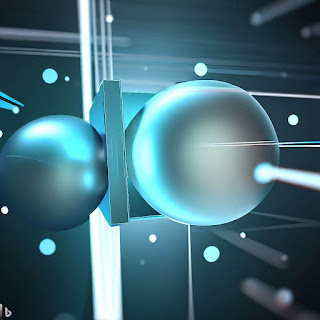Ansys Static Structural is a software that allows you to perform linear and nonlinear static analysis of structures, such as beams, plates, shells, and solids. One of the important aspects of static structural analysis is the contact between different parts of the structure, which can affect the stress, deformation, and load transfer.
According to the web search results, there are three main types of contacts in Ansys Static Structural: bonded, frictionless, and frictional¹². Each type of contact has different characteristics and applications, depending on the behavior of the interface between the parts.
- Bonded contact: This type of contact assumes that the parts are perfectly attached to each other, and there is no relative motion or separation between them. This means that both the normal and tangential forces are very large and resist any external forces that try to break or slide the parts. Bonded contact is useful for modeling welded joints, adhesive contacts, or some bolted connections¹².
- Frictionless contact: This type of contact allows the parts to separate from each other in the normal direction, but not to penetrate into each other. This means that the normal force is positive and prevents interpenetration, but zero when there is no contact. In the tangential direction, the parts can slide over each other freely, without any resistance. This means that the tangential force is zero. Frictionless contact is suitable for modeling well-lubricated interfaces or smooth surfaces¹².
- Frictional contact: This type of contact also allows the parts to separate from each other in the normal direction, but not to penetrate into each other. The normal force is similar to frictionless contact. However, in the tangential direction, the parts have some resistance to sliding over each other, depending on the coefficient of friction. This means that the tangential force is proportional to the normal force and the friction coefficient, until a maximum value is reached. Frictional contact is realistic for modeling most interfaces that have some roughness or dryness¹².
To use these types of contacts in Ansys Static Structural, you need to define them in the Contact branch of the Outline tree. You can either use the default contacts that are automatically generated by Ansys based on the geometry and proximity of the parts, or you can manually create your own contacts by selecting the contact and target surfaces. You can also modify the contact properties, such as stiffness, behavior, formulation, and friction coefficient in the Details view of each contact¹.
For some examples of how to use contacts in Ansys Static Structural, you can refer to these web pages:
- [Lecture 7 Static Structural Analysis](^1^): This lecture slides provide a comprehensive overview of static structural analysis in Ansys Mechanical, including how to define geometry, material properties, loads, supports, and contacts. It also includes two workshops on how to model a pump assembly with contact and a beam connection.
- [Introduction to Contact](^2^): This PDF document explains the basics of contact mechanics and how to model different types of contacts in Ansys Mechanical. It also includes some exercises on how to create and modify contacts for various scenarios.
- [Type of contacts in static structural](^3^): This forum post discusses how to choose between bonded and frictionless contacts for modeling an index finger that belongs to a hand orthosis model.
Source:
(1) Lecture 7 Static Structural Analysis - Rice University. https://www.clear.rice.edu/mech517/WB16/lectures_trainee/Mechanical_Intro_16.0_L07_Static.pdf.
(2) Introduction to Contact - ANSYS Innovation Courses. https://courses.ansys.com/wp-content/uploads/2019/05/2.5.1-Introduction-on-contact_New_Template_Master.pdf.
(3) Lecture 7 Static Structural Analysis - Rice University. https://www.clear.rice.edu/mech517/WB16/lectures_trainee/Mechanical_Intro_16.0_L07_Static.pdf.
(4) Introduction to Contact - ANSYS Innovation Courses. https://courses.ansys.com/wp-content/uploads/2019/05/2.5.1-Introduction-on-contact_New_Template_Master.pdf.
(5) Type of contacts in static structural - Ansys Learning Forum. https://forum.ansys.com/forums/topic/type-of-contacts-in-static-structural/.
No separation contact type
No separation contact is a type of contact in Ansys Static Structural that assumes that the parts are initially in contact and remain in contact throughout the analysis. This means that there is no gap opening or closing between the parts, but sliding is allowed in the tangential direction. No separation contact is useful for modeling interfaces that have a very small clearance or interference, such as press-fit joints, shrink-fit joints, or snap-fit joints¹².
Some examples of how to use no separation contact in Ansys Static Structural are:
- [ANSYS Contact Types - Linear, Bonded & No-separation](^3^): This video tutorial shows how to create and modify different types of contacts in Ansys Workbench, including no separation contact. It also explains the difference between linear and nonlinear contacts, and how to check the contact status and results.
- [Contact Offset Control](^1^): This workshop demonstrates how to use the contact offset control feature to adjust the initial gap or penetration between parts with no separation contact. It also shows how to use the contact tool to view the contact information and results.
- [Using Joints](^1^): This workshop illustrates how to use joints to model connections between parts, such as springs, beams, and bushings. It also compares the results of using joints versus using no separation contact for a beam connection problem.
Source:
(1) Ansys Contact Types and Explanations - Mechead.com. https://www.mechead.com/contact-types-and-behaviours-in-ansys/.
(2) Lecture 5 Modeling Connections - Rice University. https://www.clear.rice.edu/mech517/WB16/lectures_trainee/Mechanical_Intro_16.0_L05_Connections.pdf.
(3) ANSYS Contact Types - Linear, Bonded & No-separation - 38. https://www.youtube.com/watch?v=Z22sjU0PxFQ.
(4) Ansys Contact Types and Explanations - Mechead.com. https://www.mechead.com/contact-types-and-behaviours-in-ansys/.
(5) Ansys Contact Types and Explanations - Mechead.com. https://www.mechead.com/contact-types-and-behaviours-in-ansys/.
What is conjugate heat transfer and how to use in Ansys Fluent






No comments:
Post a Comment